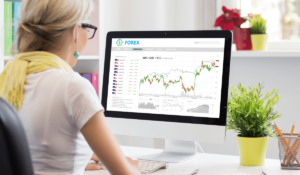When it comes to financial analysis, one concept that plays a crucial role is aggregate risk. In this blog post, we will delve into the depths of aggregate risk, exploring its definition, significance, and practical applications. So, what exactly is aggregate risk?
Aggregate risk can be best described as the level of exposure an institution faces concerning foreign exchange counterparty risk due to a single client. In simpler terms, it refers to the potential losses that may arise if numerous deals or agreements are dependent on the actions of a single client. When organizations become overly committed to one client, the aggregate risk becomes alarmingly high. Therefore, it is imperative to identify and rectify such situations promptly by diversifying and distributing risks across different clients.
The Role of Aggregate Risk in Financial Analysis
Banks and large financial institutions are the primary users of aggregate risk analysis. Given their extensive client base and the substantial amounts of money involved, it is crucial for these institutions to closely monitor and manage aggregate risk. They often have dedicated departments that specialize in aggregate risk management, aiming to safeguard the institution during uncertain economic times, such as credit crunches, recessions, or cases of insolvency.
When to Utilize Aggregate Risk Assessment
An aggregate risk assessment becomes essential when a single individual is engaged in multiple transactions, deals, and agreements with the same counterparty. In such cases, the risk limits extended to that client are determined based on their credit history. It is crucial to exercise caution when dealing with new clients or those with poor credit scores.
Calculating Aggregate Risk: A Pragmatic Approach
The most effective method of calculating aggregate risk involves examining all individual agreements made between the parties involved and treating them as separate entities. It is crucial to consider the concept of diminishing returns to ensure that the cost and time required for individual assessments are feasible. Additionally, each agreement’s associated risks should be clearly defined, and their impact on the overall risk assessment should be carefully evaluated. While uncertainty is an inherent aspect of the global economy, it is essential to account for potential unforeseen events that may affect the economy.
Examples Illustrating Aggregate Risk
Let’s consider a general example to better understand aggregate risk. Suppose there are two corporations, Company A and Company B, engaged in long-term dealings with each other. Company A realizes that its portfolio of agreements with Company B has become extensive, leading to risk aggregation. To mitigate this risk, Company A conducts a series of risk analysis assessments on each individual agreement with Company B, aiming for significant risk decomposition until an acceptable level is achieved. If Company A determines that the risks outweigh the tolerable threshold, it may freeze any additional agreements with Company B until ongoing ones are finalized.
The Relationship Between Aggregate Risk and FX Returns
Foreign exchange transactions involve dealing with counterparties, and when a cumulative amount of exchange occurs repeatedly with the same individual, an aggregate risk assessment becomes necessary. It is crucial to determine whether the potential gains from such agreements outweigh the risk of incurring significant financial losses. It is not enough to assume that a large number of agreements inherently constitute an intolerable aggregate risk. Sometimes, a single individual with two agreements may pose a higher aggregate risk than someone engaged in multiple dealings. Given the inherent risks of forex trading, conducting a careful aggregate risk assessment is vital.
Conclusion: Harnessing the Power of Aggregate Risk Assessment
Aggregate risk assessment serves as an effective tool to shield large institutions from devastating financial losses. However, it requires careful utilization, as overzealousness can lead to diminishing returns and hinder potentially profitable investments. Conducting an aggregate risk assessment correctly and discerningly is crucial. Though risks may never disappear entirely, they must not outweigh potential gains.
The world of foreign exchange is volatile and inherently risky. The ability to predict market shifts is limited, and historical trend analysis provides only partial clues. In such a landscape, where significant investments are at stake, the aggregate risk must be carefully evaluated to mitigate the potential danger of substantial financial losses.








